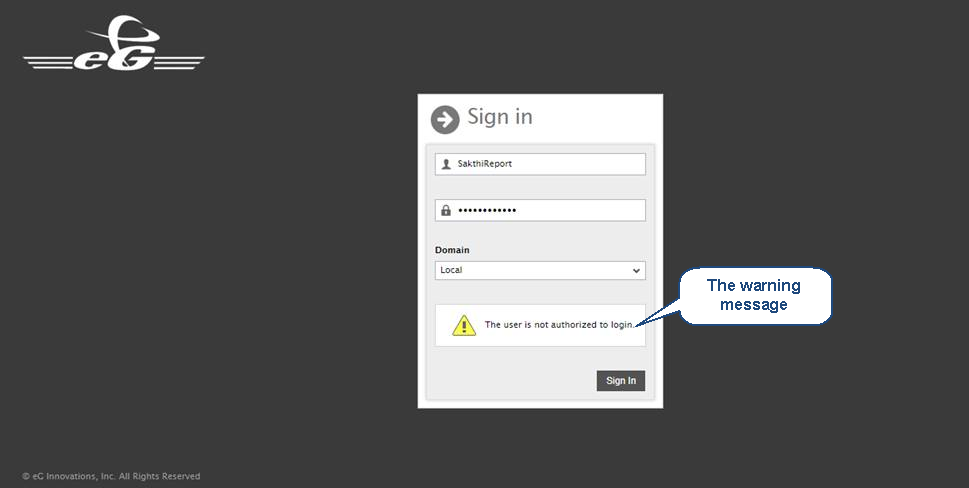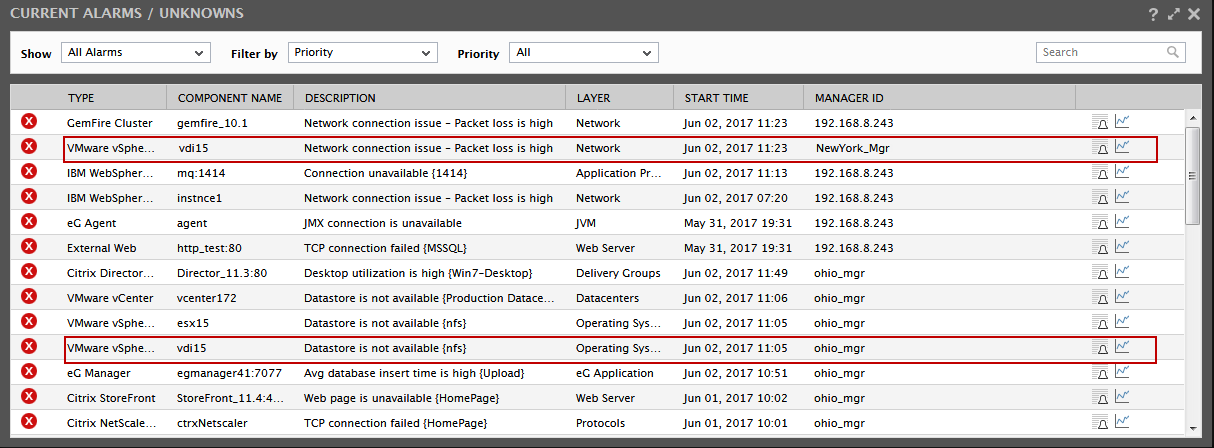The View Received by Other Users
Besides the default user egsm, the eG SuperManager supports all other users registered with each of the individual managers reporting to it. The access rights defined for them in their respective managers will automatically apply. Accordingly, the alarms displayed in this page are specific to the services/segments/components/zones being monitored by the current user. For instance, when a user who is assigned the AlarmViewer role logs into the SuperManager interface, he/she will receive a home page that only lists the alarms pertaining to those infrastructure elements that are associated with that user (see Figure 1).

Figure 1 : The AlarmViewer role
Moving your mouse pointer over an alarm will reveal additional alarm details along with the following options (see Figure 2):
- An option to view the history of fixes to the issue indicated by the alarm
- An option to add more fixes

Figure 2 : The details of an alarm of an AlarmViewer along with Feedback and History options
In case of a SuperAlarmViewer, the only difference is that the list of alarms displayed in the home page will pertain to the monitored environment as a whole.
Also, if a particular user has been configured to view only a specific priority of alarms then this window will display alarms pertaining to that priority only.
Moreover, if the same user name and password are registered with multiple managers, then the eG SuperManager alarms window will display all the alarms pertaining to that user across all the managers to which he/she has access. For example, consider the case of user john who has been created both in manager Newyork and manager Ohio, with Monitor user privileges. Some critical components of the infrastrucutre have been assigned to the user john registered with the New York manager and the Ohio manager. However, if the passwords of both the johns were the same, then the resulting CURRENT ALARMS window will list alarms pertaining to all the components assigned to the user across the infrastructure (see Figure 3).

Figure 3 : Alarms pertaining to both the 'johns'
Now, assume that a user named repo (password: repo) with 'Reporter-only' rights has been configured in both the NewYork and Ohio managers. When this user tries to log into the eG SuperManager interface, the login will not be validated and an warning message will appear (see Figure 4). This is because the reporter-only rights user will not have permission either to view the eG SuperManager admin interface or the eG SuperManager monitor interface.

Figure 4 : The pop up window stating that the reporter only user cannot access the eG SuperManager
If a component is managed with the same nick name by both the Ohio and NewYork managers, then, in the event of a problem with both the components, the component will appear twice in the CURRENT ALARMS window of the SuperManager interface. (see Figure 5)

Figure 5 : The component with the same nick name in both Ohio and New York managers
Note:
In order to avoid duplications, it is recommended that you develop standard naming conventions that would be applicable to the users/roles/components across all the managers in your environment.
If a user who has been assigned the AlarmViewer or the SuperAlarmViewer role logs into the eG SuperManager interface, then he/she will only be able to view the CURRENT ALARMS window only and not the home page.
